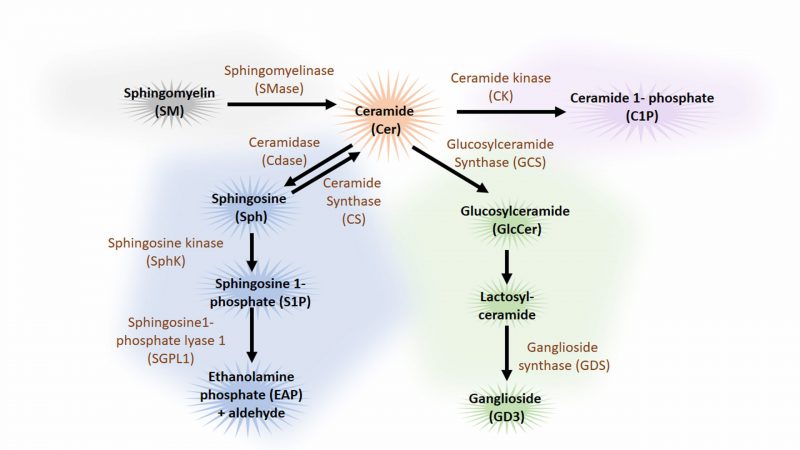Back to article: The role of lipids in autophagy and its implication in neurodegeneration
FIGURE 4: Overview of sphingolipid metabolism pathway. Ceramide (Cer) occupies a central position in the catabolic (blue), the sphingomyelin (grey) and hydrolytic (green) sphingolipid pathways. Apart from the de novo synthesis, ceramide can also be synthesized from sphingomyelin (SM) by sphingomyelinase (SMase) or from sphingosine (Sph) by ceramide synthase (CS). Cer can be catabolized to the biologically active metabolites, sphingosine (Sph) and sphingosine 1-phosphate (S1P) and further catabolized to ethanolamine phosphate (EAP) and C16 fatty aldehydes by ceramidase (Cdase) by the sphingosine kinase (SphK) and sphingosine1-phosphate lyase 1 (SGPL1) respectively. Cer can also be hydrolysed by glucosylceramide synthase (GCS) to glucosylceramide (GlcCer) and by ganglioside synthase (GDS) to ganglioside (GD3), a complex glycosphingolipid. Phosphorylation of Cer by the ceramide kinase (CK) produces ceramide-1-phosphate (C1P). Sphingolipids are coloured in black and enzymes are coloured in brown. (Note only autophagy relevant parts of the sphingolipid pathways are illustrated.)

